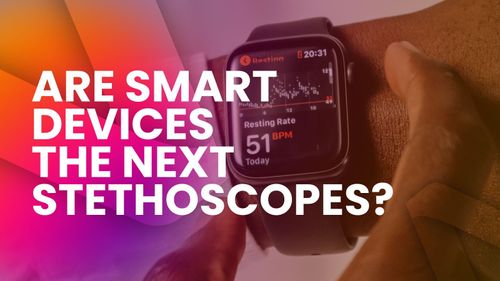 Data codes through eyeglasses. Photo credit: Kevin Ku
Data codes through eyeglasses. Photo credit: Kevin Ku
Every organization is a potential cybersecurity victim. That’s because each one has value to cybercriminals, whether in the form of sensitive information, company data, or original ideas. Cybercriminals are usually motivated by financial gain, and try to profit at your expense by selling the stolen information or using it to commit fraud or extortion.
This is why strong cybersecurity is essential for protecting organizations of all sizes. Most organizations will be targeted at some point, so you have to be proactive and stay ahead of threats by identifying risks and implementing effective prevention strategies.
Fortunately, there are many ways to reduce your risk and prevent common types of cyber attacks. This guide tells you how to identify cybersecurity risks, put prevention measures in place, and what small businesses can do to improve their network security immediately.
How Businesses Identify Cybersecurity Risks
Before you can secure your systems, you need to understand how to identify cybersecurity risks.
This first step is determining what assets or information your organization has that could be valuable to cybercriminals. This could be personal or financial data, login credentials, medical records, business plans, employee information, or another type of sensitive data.
Step two is identifying the threats to how you store and protect this sensitive data. Common methods for determining cybersecurity risks include:
1. Penetration Testing: This security exercise involves experts simulating cyberattacks to find weaknesses in a company's computer system before attackers can take advantage of them.
2. Vulnerability Scanners: Automated tools can discover, analyze, and report security flaws and risks. By proactively identifying gaps in your cybersecurity program, vulnerability scanners ensure they can be patched before they are exploited.
3. Risk Assessments: A systemic process that identifies vulnerabilities and threats within an organization's IT systems and data. If you don’t have an in-house cybersecurity team experienced in risk assessment, it is recommended to engage a trusted third-party cybersecurity partner.
4. Threat Intelligence: Businesses can use data gathered from external sources such as hacker forums and threat intelligence services to stay informed about emerging threats and implement preventative strategies.
5. Incident Detection Tools: Real-time monitoring solutions, like Security Information and Event Management systems (SIEM), identify unusual activities that indicate potential security threats. Catching these vulnerabilities early lessens their potential to disrupt business operations.
How Businesses Prevent Cybersecurity Attacks
Understanding how to prevent cyber attacks is crucial for safeguarding systems. The good news is, many prevention strategies are effective and affordable. Common cybersecurity prevention strategies include:
1. Firewalls & Antivirus Software: Firewalls prevent malicious traffic to a network or system by acting as a barrier and blocking unauthorized access. Antivirus software detects, blocks and removes malicious software (malware) running on a host or server.
2. Multi-Factor Authentication: Also known as two-step verification, this method requires multiple forms of identification to log in. This can reduce the number of unauthorized access risks and compromised passwords.
3. Employee Training: Cybersecurity breaches are often the result of human error. Training your team to recognize cybersecurity threats such as phishing attempts, and how to adopt best practices can drastically reduce vulnerabilities.
4. Data Encryption: This security method scrambles data, making it unreadable without a decryption key. Encrypting sensitive information ensures that stolen data is unreadable to cybercriminals.
5. Patch Management: Consistently applying updates to your organization’s software, drivers, and firmware protects against cyber attacks that target outdated systems.
What Are Preventive Controls in Cybersecurity?
Preventive controls in cybersecurity are measures designed to prevent a cyber attack from occurring or reduce the impact of one. These proactive safeguards are the first line of defense against network vulnerabilities.
Preventive controls include:
1. Access Controls: Limiting who can access sensitive information reduces the risk of insider threats. Data permissions should be set based on what information users need to do their jobs. For example, the Chief Financial Officer doesn’t not need access to the same systems as the HR Director.
2. Endpoint Security: Network endpoints are devices such as desktops, laptops, and cell phones connected to the company’s network. These endpoints can become entry points to an organization’s network for cybercriminals. A study by the International Data Corporation found that 70% of successful data breaches originate on endpoint devices, and with remote work becoming increasingly common, endpoint protection platforms (EPP) are essential to modern cybersecurity strategies.
3. Security Policies: Clear guidelines for how to handle data and protocols for breach responses help reduce risks. IT security policies should outline acceptable use, password management, data handling, and other security best practices.
Steps for Small Organizations to Prevent Cybersecurity Fraud
Small organizations don’t always have the resources or budget for comprehensive cybersecurity. But there are still low-cost, low-maintenance steps to prevent cybersecurity fraud in a small organization.
The easiest is to implement strong password policies that include requiring users to regularly update and strengthen their passwords and call for two-factor authentication where possible. Backing up data frequently minimizes losses if a breach does occur. Security software that provides antivirus and firewall protection is widely available online. And finally, taking the time to train employees to spot suspicious emails and other fraudulent activities can prevent successful cyber attacks and save you a lot of headaches.
What the Future of Cybersecurity Will Look Like
Artificial Intelligence is transforming the future of cybersecurity by allowing businesses to predict and respond to threats faster than ever. AI-driven threat detection systems can analyze enormous amounts of data in real time to detect common cyber threat patterns, as well as scan entire networks for weak points.
Blockchain technologies are also being developed to create secure, decentralized data storage that provide a potential shield against breaches.
The rise of “smart devices” is also making the security landscape more complex. Smartwatches, smart thermostats, voice controls and other gadgets or appliances that transmit data can all potentially be exploited. Businesses will need to implement more sophisticated security measures to protect interconnected devices from threats.
You can read more about the Future of Cybersecurity in this article.
How New Businesses Are Helping Fight Cybersecurity
Startups are playing a critical role in developing new technologies to help businesses secure their systems. At VivaTech, emerging cybersecurity companies such as Board of Cyber, Darktrace, Talos, CYBIAH and Sekoia have presented cutting-edge solutions.
One notable area of growth is Cybersecurity as a Service (CaaS). This model allows small and medium-sized businesses to access top-tier security solutions without maintaining an in-house security team. Leading CaaS companies Palo Alto Networks and Qevlar AI have been VivaTech exhibitors.
Other startups are using behavioral analytics to detect anomalies in user behavior, helping identify potential insider threats before they cause damage. Zero-trust security frameworks are also becoming more popular. These models require continuous verification of all users and devices, inside and outside the network.
Don’t risk exposing your organization to breaches, loss of productivity, and loss of reputation. You now have the knowledge to implement proper security measures and ensure your business can defend itself against the growing threat of cyberattacks.


